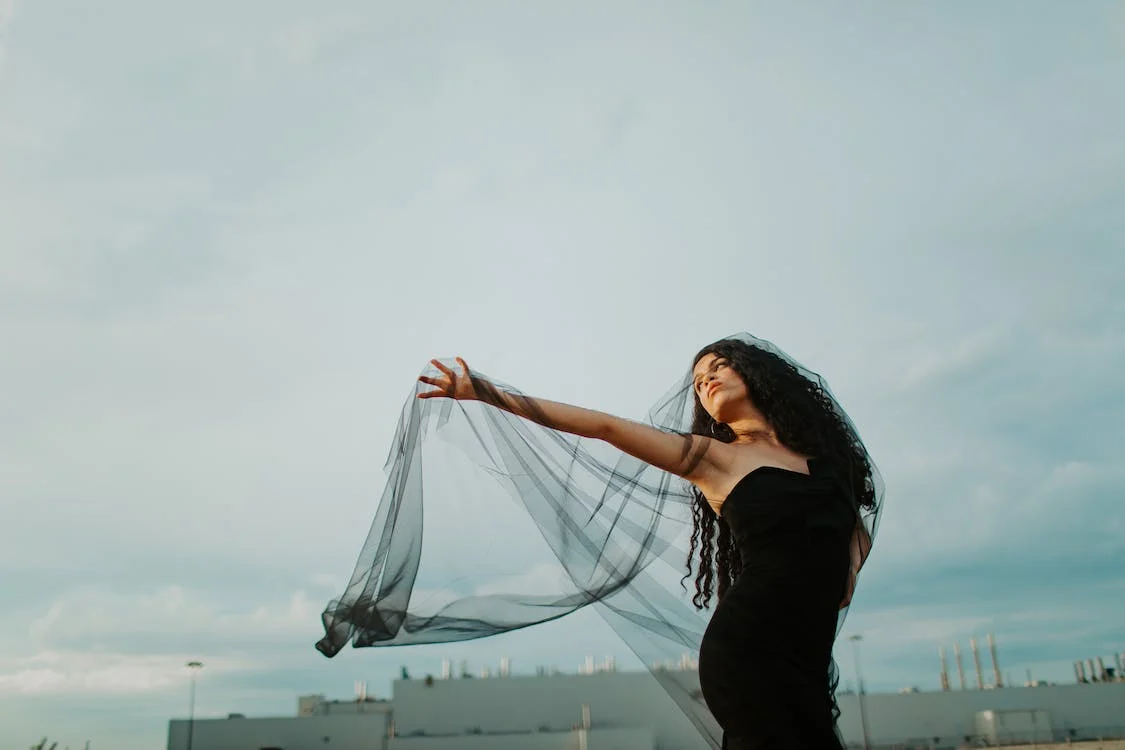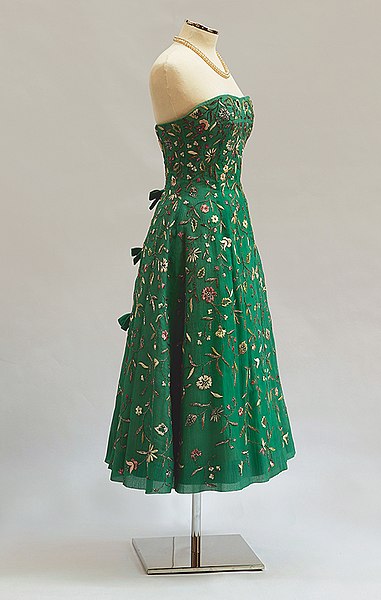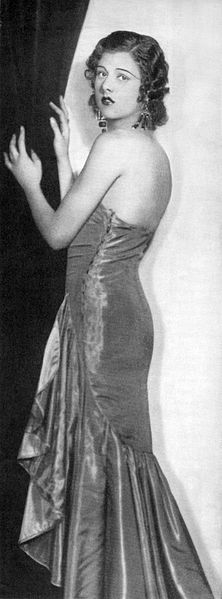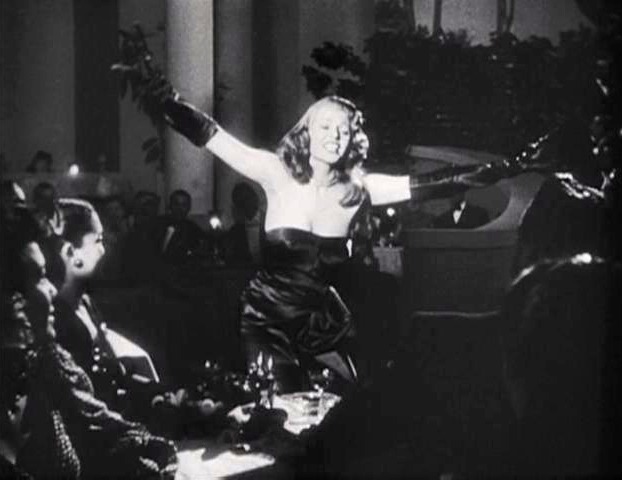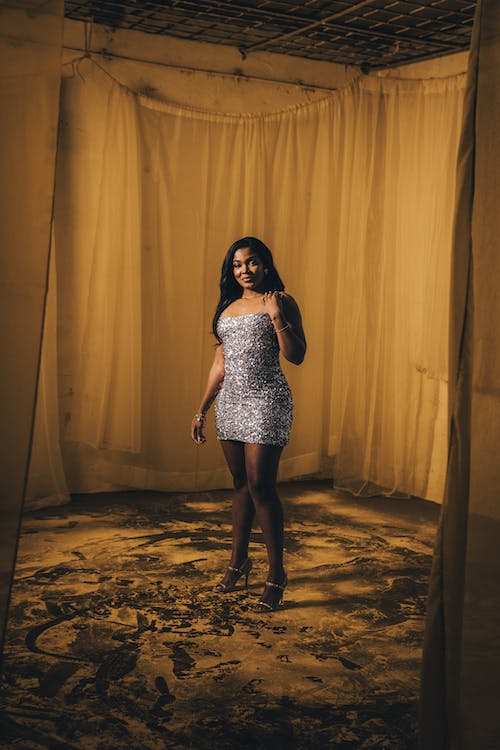Without straps or sleeves, a tube dress is a style of women’s clothing that is made to fit snugly around the body from the bust to the hips. It is frequently worn as a casual or formal dress, depending on the fabric and style, and is generally fashioned from a flexible material like spandex or jersey.
The tube dress gets its name from the way it resembles a tube of fabric that is wrapped around the body and clings to its curves. This dress style may be dressed up or down with the appropriate accessories and footwear. It may be layered with a jacket or cardigan for added warmth or worn by itself for a casual look. Some tube dresses contain built-in bras or other types of support to help keep them in place.
History
1930s to 1980s
Designers like Mainbocher and Christian Dior helped popularize the contemporary strapless dress in the 1930s when it initially debuted. According to the July 18, 1938, issue of Life, the “absolutely strapless, sleeveless evening dress” was created around 1937–1938. However, that was preceded in 1930 by an image of Libby Holman, a famous actress, wearing what appeared to be a strapless dress. As one of the earliest well-known users of the strapless dress, Holman came to be identified with it and is sometimes given credit for creating it.
Along with Holman and Mainbocher, the heiress Brenda Frazier is also credited with popularizing the style when she wore a strapless debutante dress for her debut and famously appeared in it on the November 14, 1938, cover of Life. Mainbocher created his first strapless gown in 1934, a black satin design that has been described as the first strapless evening dress.
After the Second World War, strapless dresses remained common; the aesthetic was frequently referred to as the “naked look.” The black satin dress Rita Hayworth wore for a song and dance number in Gilda is one of the most well-known strapless costumes from this era. Viewers saw in Hayworth’s performance that strapless gowns may be stable enough to move about and dance in without running the risk of being exposed indecently. Even said, more traditional clients can choose to adorn their new strapless gowns with shoulder straps. For many who disapproved of the look’s alleged immodesty, the fashion was problematic. Catholic activists in the United States condemned “immodest” attire, such as two-piece and strapless swimsuits and gowns, throughout the 1940s and 1950s. In Germany, the United States Army attempted to outlaw the wearing of shorts, trousers, and strapless dresses in 1954, “except at appropriate social functions.”
Famous strapless dress designers of the 1950s included Madame Grès, whose flowing Grecian designs were supported by Alice Cadolle-designed inner corsets.
Halston created an unstructured strapless dress in the 1970s. The knitted tube top served as a casual strapless alternative, and by the 1980s, flexible, elastic materials were being used to create strapless gowns without the need for boning or internal support.
The 1990s onwards
The strapless gown was listed as the most popular design for Western wedding gowns in 2012. Vera Wang is sometimes given credit for popularizing this type of bridal attire in the first decade of the twenty-first century, although strapless gowns became a more acceptable alternative starting in the 1990s with the rise in formal civil marriages. Despite the popularity of the strapless wedding dress, some people believe it to be a “rejection of the virginal ideal” for religious weddings, hence strapless and shoulder-baring designs are potentially contentious.
The strapless dress is a favorite for red-carpet attire as well.
Social and cultural context
Since its emergence, strapless clothing has presented issues in a variety of settings. Early in the twenty-first century, several companies and educational institutions officially prohibited strapless clothing as part of their dress code.
Religious stances
Preachers and clerics may specifically criticize sleeveless clothing. A Muslim preacher labeled strapless dress as “satanic” in 2005, along with other exposing attire including miniskirts and transparent shirts. While other Latter-day Saints deemed them an “abomination in the sight of the Lord,” Spencer W. Kimball, the 12th President of the Church of Jesus Christ of Latter-day Saints (LDS church), declared that strapless gowns were neither righteous nor approved and that no Latter-day Saint woman should wear one at any time. Although a general rule is that strapless clothing is only appropriate in religious environments, such as Catholic churches or Jewish bat mitzvahs, if the shoulders and arms are covered, such opinions may not always reflect those of the majority of their connected faith.
Tips for wearing a tube dress
Select the correct size
Since tube dresses are form-fitting, choosing the incorrect size might make them uncomfortable. Before making a purchase, be sure to take precise measurements of yourself and refer to the size chart.
Think about your body type
Tube dresses may compliment a variety of body shapes, but it is crucial to pick a design that enhances your features. If you have curves, search for a dress with draping or ruching to highlight them. Choose a lower hemline if you’re tiny to make your legs appear longer.
Put on the proper bras
Strapless or adhesive bras are essential while wearing a tube dress. Choose seamless underwear that will not cause any lines or bulges to show.
Accessorize wisely
Depending on the occasion, tube dresses may be dressed up or down with the right accessories. Dress in heels, flashy jewelry, and a handbag for a formal event. Choose sandals or sneakers and a few other accessories for a more relaxed appearance.
Make sure the dress stays put
Wearing a tube dress might be difficult because of how difficult it is to keep it in place. Consider securing the dress to your flesh with double-sided fashion tape to prevent any wardrobe mishaps. To assist hold things in place, you can also pick a dress with built-in support or put on a slip.
How to style tube dresses
Women who desire to seem fashionable and attractive frequently choose tube dresses. They may be dressed up or down depending on the situation and are adaptable and comfy. Here are some styling suggestions for a tube dress:
- Belt it up. A belt may give your figure instant definition and form when worn with a tube dress. Your preference will determine whether you choose a thin or thick belt.
- Layer with a jacket. If you want to give your tube dress some edge, think about layering it with a blazer, denim jacket, or leather jacket.
- Wear it with heels. Heels may quickly dress up and formalize your tube dress. Choose wedges, pumps, or strappy sandals.
- Accessorize with jewelry. Add some shine to your ensemble by accessorizing with bold necklaces, bracelets, and earrings. Keep it basic to prevent overpowering the garment.
- Put on flats. You may wear your tube dress with flat sandals, espadrilles, or sneakers for a more relaxed appearance.
- Play around with patterns and colors. Tube dresses come in a range of prints and hues, so have fun, and try out various designs and tones.

